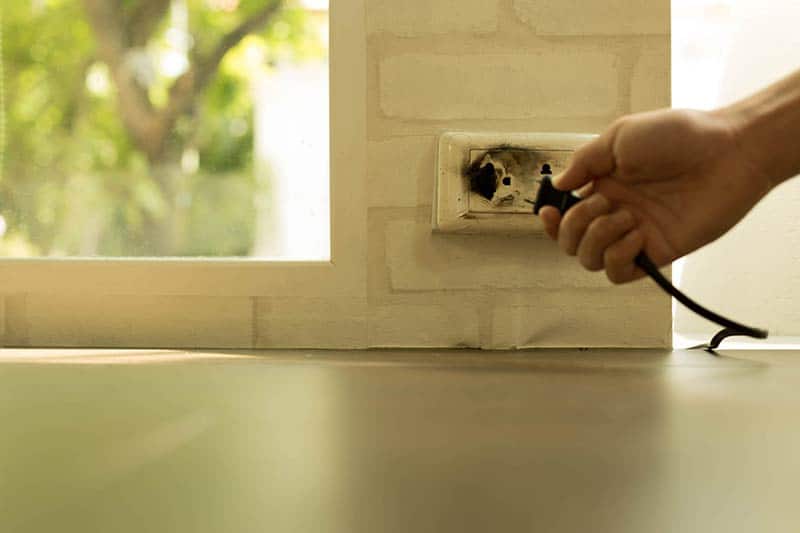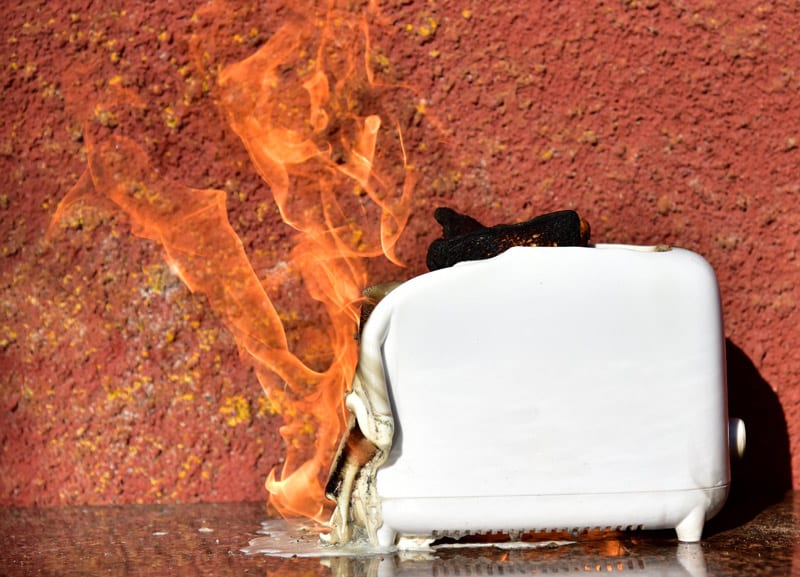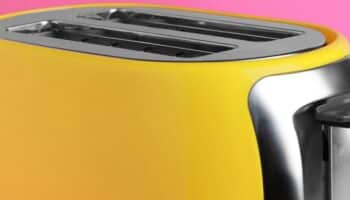Ah, the smell of fresh coffee and buttery toast in the morning! But wait. What happened? The toaster keeps tripping the circuit breaker. Oh no!
Why does your toaster keep tripping the circuit breaker? Or is it even the toaster’s fault to begin with?
We took a DEEP DIVE into this problem and found the best answers available. This article will review several different possible reasons that the circuit breaker trips every time you use your toaster.
So, if you’re ready, let’s get right into the information!
SAFETY FIRST!
Toasters draw a lot of electrical power to operate. Electricity follows a path of least resistance and will have guilt if it electrocutes you! PLEASE unplug your toaster before attempting to troubleshoot it or the electrical components that power it.
Why does the toaster keep tripping the circuit breaker?
There are several possible reasons that the power supply keeps getting interrupted when you try to use your toaster. The problem is likely to be:
- The power cord to the toaster is damaged.
- The outlet the toaster is plugged into is faulty.
- The electrical breaker is defective or the wrong size.
- The toaster has faulty electronics.
Let’s take a closer look at each possible situation. We’ll discuss what you can do to troubleshoot and determine precisely why your toaster keeps popping the circuit breaker – and what you can do to resolve the problem and get back to your hot coffee and buttery toast!
#1 Faulty power cord
If your toaster’s power cord is slit, burnt, melted, or otherwise damaged, it could cause a short and trip the circuit breaker. Carefully unplug the toaster and visually inspect the cord for damage. Replacing or repairing the cord is possible. However, you’ll have to consider if the cost of a new cord and the labor of putting it on the toaster are worth more than the toaster itself. It might be time for a change!
#2 Faulty electrical outlet
If the toaster’s power cord seems to be in good shape, inspect the outlet that you’re plugging it into. Are there any noticeable burn marks? Does it smell like burnt plastic?

Of course, if you have access to a voltage meter and understand how to use it, you can test the outlet and be sure either way.
If the power outlet doesn’t seem to be the issue, it’s a good time to question the integrity of the circuit breaker that keeps tripping off and interrupting the electrical current to the toaster.
#3 Faulty or improper circuit breaker
Nearly all pop-up toasters in the United States operate at 120 volts. They also consume, on average, about 1200 watts.
Watts / Volts = Amps
1200 / 120 = 10
So, most toasters use about 10 amps, which is one-half of the full-load current that a 20A breaker can handle without tripping. It’s also two-thirds of the full current load of a 15A breaker.
So, the question is what other appliances or devices are running on the same circuit as your toaster?
For instance, if your toaster is plugged into a circuit controlled by a 20A circuit breaker, and your refrigerator is on the same circuit, the two appliances together may cause the breaker to trip.
The refrigerator may be fine until someone uses the toaster. Then the toaster pulls too much more current through the breaker than it is designed to handle, which causes the breaker to trip and interrupt power to the entire circuit.
So, the lesson?
It’s good to have your toaster on a dedicated circuit with its own 20A circuit breaker. Having a dedicated circuit means that the toaster is the only appliance or device consuming any power on the circuit. Nothing else is plugged in, drawing power through the circuit.
If it isn’t possible to dedicate a separate circuit to your toaster where you live, then consider which other appliances are on the same circuit as the toaster. It would be better to have a radio plugged into it than a refrigerator, space heater, or microwave.
Of course, the problem could be in the circuit breaker, which could have become defective over time due to moisture, corrosion, old age, or unintentional damage. You can inspect a circuit breaker visually, but it should be tested properly to be sure. In most cases, if a circuit breaker keeps tripping and will not remain in its “ON” position, it’s time for a replacement. If you think yours needs to be replaced and don’t know how to do it, then call a professional. It’s VERY dangerous to go poking around an electrical service panel when unarmed with proper knowledge and experience. It can be deadly, so please stay safe!
#4 Faulty or damaged electronics in the toaster
Toasters depend on the proper function of various mechanical and electronic parts, including:
- Circuit board with resistors
- Timing mechanism
- Calibrating spindle
- Heating elements
- Regulating knob
- Electromagnets
- Bread racks
- Heat sensor
Any parts can become damaged or defective over time. One common way they become damaged is by owners attempting to pry thick bread slices out with metal utensils, like a kitchen knife or a fork.
Even if you use bamboo or wooden utensils to pry out stuck bread from a toaster, it can damage the heating elements or other parts inside the unit. This can cause short-circuiting, which in turn could cause the breaker to trip when you operate the toaster.
Sure, you can take the toaster to an appliance repairman, and maybe he could dissect and repair the toaster. But is it really worth it?
Amazon shows many residential pop-up toasters for less than $100, and most cost less than $60. So, ask yourself if it is worth it to hire an appliance repairman to fix your toaster. You’re probably going to fare better if you just buy a new one.

Frequently Asked Questions
How to tell if an electrical circuit is overloaded
There are several signs that a circuit may be overloaded and need attention. These include frequently tripped breakers, discolored wall plates, burning odors, dimming or flickering lights, mild electric shock from appliances, sizzling, crackling, or buzzing.
These are serious signs that should be addressed by a professional electrician as soon as possible. Electrocution and fire are possible!
How much does a circuit breaker cost?
Standard 10 – 60-amp circuit breakers aren’t very expensive. If you need to replace one, you’re probably going to pay between $35 – $60. If you need to replace an Arc Fault Circuit Interrupter (AFCI), expect to pay between $45 – $70 for 15A – 20A units.
How to replace a faulty circuit breaker
Replacing a faulty circuit breaker is a straightforward task that most people can perform safely. However, it is very important to understand what you’re doing BEFORE beginning. Optimal safety is imperative any time you’re manipulating electrical wiring or devices. If you don’t know what you’re doing, please stop and call someone who does.
To replace a circuit breaker, you need to:
- Shut off all branch breakers one at a time
- Shut off the main breaker
- Test wiring with a voltage meter to ensure they are not live
- Open or remove the breaker panel cover
- Disconnect the wire from the terminal on the faulty breaker
- Pop the faulty breaker out of its port
- Insert the new breaker into the port
- Attach the circuit’s load wire to the new terminal
- Replace or close the breaker panel cover
- Turn the main breaker on
- Turn each branch breaker on
If the circuit breaker continues to trip, then it’s time to contact an electrician. Electricians are trained and equipped to troubleshoot and repair electrical appliances and the circuits that feed them power.
Summary
Waking up to the smell of fresh toast is comforting, but having to reset the circuit breaker every time you make toast is not! If your circuit breaker keeps tripping every time you try to make toast, the problem might be inside the toaster or in the electrical supply that feeds it.
You could have a split wire causing a short circuit, a damaged outlet, a faulty breaker, or a toaster that simply needs replacing.
We hope you have found the information in this article time-saving and useful. Please always be safe when attempting to troubleshoot or repair any electrical appliance or device. You only get one chance to stay safe!
Thank you very much for reading and please check out some of our other helpful articles below!







